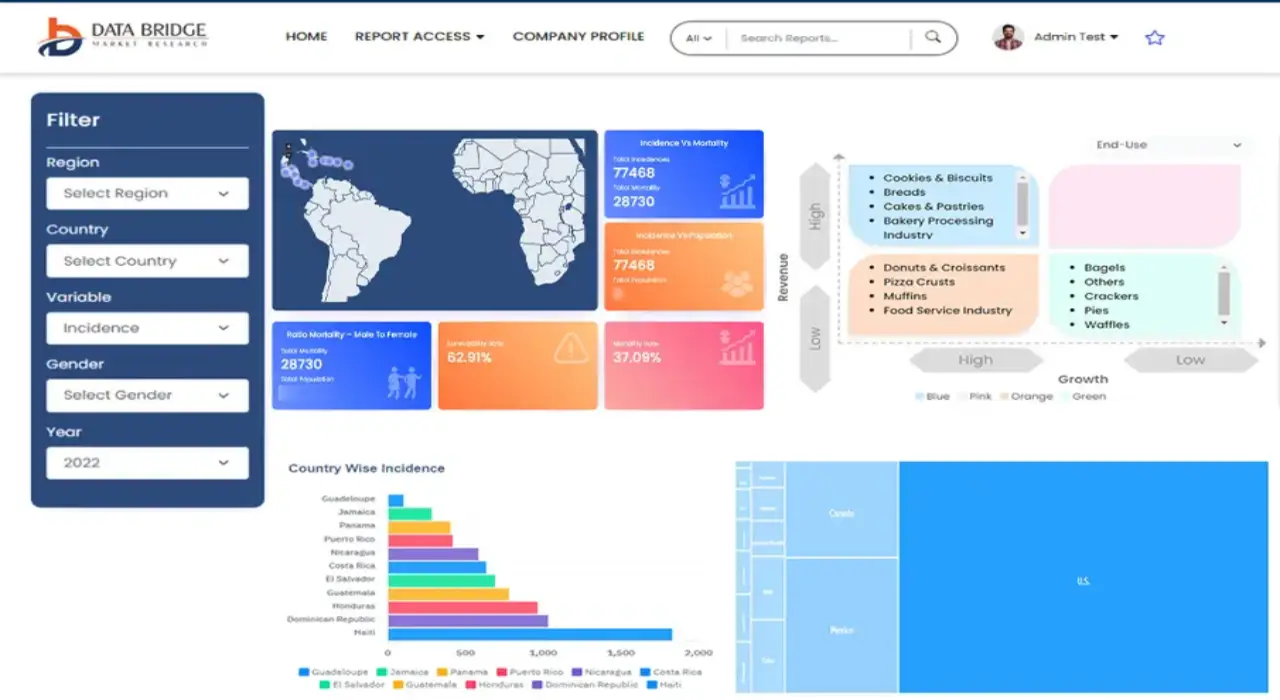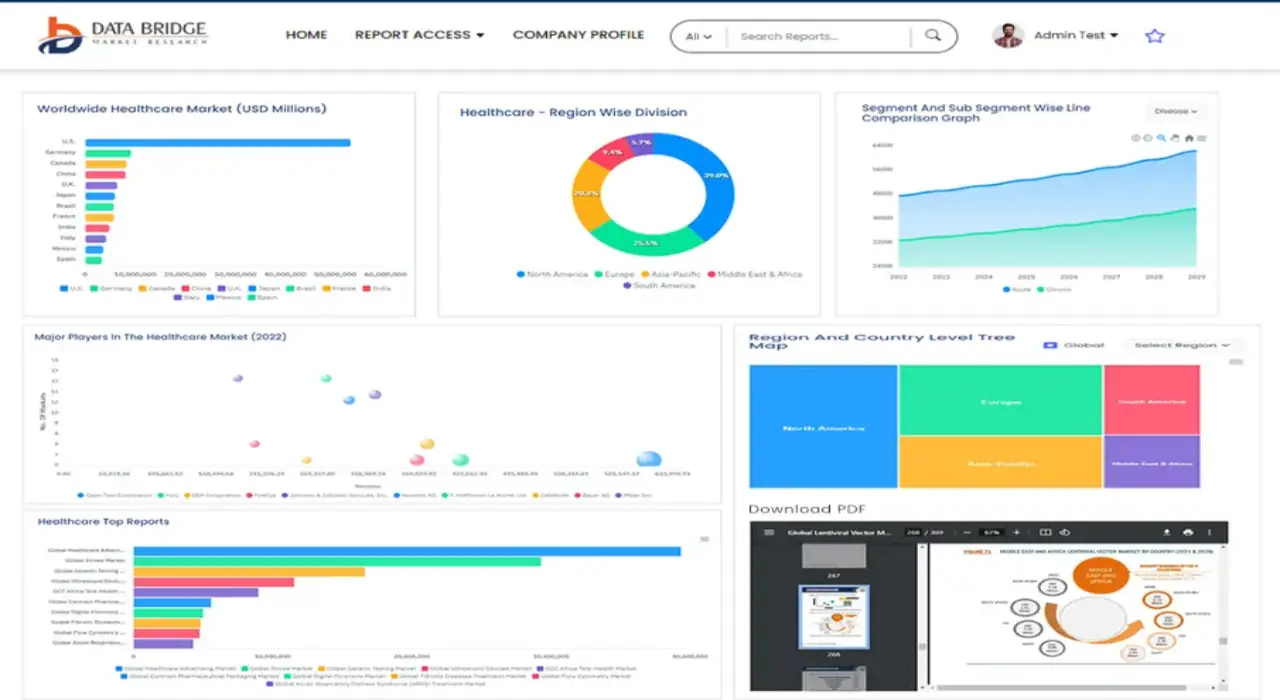Global Electro Medical Devices In Alzheimers Treatment Market
市场规模(十亿美元)
CAGR :
% 
| 2024 –2031 | |
| USD 4.54 Billion | |
| USD 9.70 Billion | |
|
|
|
阿尔茨海默氏症治疗市场中的全球电子医疗设备细分,按药物类别(胆碱能药物、美金刚、联合药物、乙酰胆碱酯酶抑制剂和免疫球蛋白)、药物类型(胆碱酯酶抑制剂和 NMDA 受体拮抗剂)、治疗药物(胆碱酯酶抑制剂、NMDA 受体拮抗剂和其他治疗药物)划分 - 行业趋势和预测至 2031 年
阿尔茨海默氏症治疗中的电子医疗设备市场分析
阿尔茨海默病治疗市场中的电子医疗设备正在迅速发展,这得益于旨在改善患者治疗效果的技术进步。人工智能和机器学习的整合等最新发展正在实现更加个性化的治疗方法,从而更好地管理疾病。此外,阿尔茨海默病在全球范围内的患病率不断上升,再加上人口老龄化,推动了对创新治疗方案的需求。此外,政府对阿尔茨海默病研究的举措和资助正在促进该领域的创新。随着市场的不断扩大,电子医疗设备有望在阿尔茨海默病的管理和治疗中发挥关键作用,最终提高患者及其家属的生活质量。
阿尔茨海默氏症治疗中的电子医疗设备市场规模
2023 年,全球阿尔茨海默氏症治疗用电子医疗设备的市场规模价值为 45.4 亿美元,预计到 2031 年将达到 97 亿美元,2024 年至 2031 年预测期内的复合年增长率为 9.95%。除了对市场价值、增长率、细分、地理覆盖范围和主要参与者等市场情景的见解外,Data Bridge Market Research 策划的市场报告还包括深度专家分析、患者流行病学、管道分析、定价分析和监管框架。
阿尔茨海默氏症治疗中的电子医疗设备市场趋势
“先进的脑电图监测系统”
The electro-medical devices in alzheimer’s treatment market is witnessing significant trends driven by technological advancements and a deeper understanding of the disease. Innovations such as neurostimulation techniques and advanced EEG monitoring systems are enhancing the efficacy of treatments, providing real-time data for better patient management. One notable trend is the rise of wearable devices that track cognitive functions and provide therapeutic stimulation, allowing for more personalized care. These devices help in symptom management and enable caregivers to monitor patients more effectively. As awareness of Alzheimer’s disease grows, along with the demand for effective treatment options, the market for electro-medical devices is expected to expand, offering new solutions for patients and healthcare providers alike.
Report Scope and Electro-Medical Devices in Alzheimer’s Treatment Market Segmentation
|
Attributes |
Electro-Medical Devices in Alzheimer’s Treatment Key Market Insights |
|
Segments Covered |
|
|
Countries Covered |
U.S., Canada and Mexico in North America, Germany, France, U.K., Netherlands, Switzerland, Belgium, Russia, Italy, Spain, Turkey, Rest of Europe in Europe, China, Japan, India, South Korea, Singapore, Malaysia, Australia, Thailand, Indonesia, Philippines, Rest of Asia-Pacific (APAC) in the Asia-Pacific (APAC), Saudi Arabia, U.A.E., South Africa, Egypt, Israel, Rest of Middle East and Africa (MEA) as a part of Middle East and Africa (MEA), Brazil, Argentina and Rest of South America as part of South America |
|
Key Market Players |
Eli Lilly and Company (U.S.), VTV Therapeutics (U.S.), TauRx Pharmaceuticals Ltd (U.K.), AC IMMUNE SA (Switzerland), Johnson & Johnson Private Limited (U.S.), AbbVie Inc. (U.S.), Eisai Co. Ltd. (Japan), Novartis AG (Switzerland), Pfizer Inc. (U.S.), Merz Pharma (Germany), H. Lundbeck A/S (Denmark), AstraZeneca (U.K.), F. Hoffmann-La Roche Ltd (Switzerland) |
|
Market Opportunities |
|
|
Value Added Data Infosets |
In addition to the insights on market scenarios such as market value, growth rate, segmentation, geographical coverage, and major players, the market reports curated by the Data Bridge Market Research also include depth expert analysis, patient epidemiology, pipeline analysis, pricing analysis, and regulatory framework. |
Electro-Medical Devices in Alzheimer’s Treatment Market Definition
Electro-medical devices in alzheimer’s treatment are advanced technological tools designed to assist in diagnosing, managing, and treating Alzheimer’s disease. These devices, including neurostimulation tools and EEG monitors, utilize electrical impulses to stimulate brain activity, alleviate symptoms, and enhance cognitive functions. They enable personalized treatment approaches, improve patient monitoring, and ultimately aim to enhance the quality of life for individuals affected by the disease.
Electro-Medical Devices in Alzheimer’s Treatment Market Dynamics
Drivers
- Rising Prevalence of Alzheimer’s Disease
The rising incidence of alzheimer’s disease and related dementias is a significant concern, particularly due to the growing aging population worldwide. As people live longer, the prevalence of cognitive disorders is expected to increase, leading to a higher demand for effective treatment options. Electro-medical devices are emerging as essential tools in this context, offering innovative solutions to alleviate symptoms and improve patient outcomes. These devices aid in symptom management and enhance the overall quality of life for individuals affected by the disease. Consequently, the urgent need for effective therapies is driving the adoption of electro-medical devices in alzheimer’s treatment, marking it as a crucial market driver.
- Innovations in Neurostimulation Techniques
Innovations in neurostimulation techniques, electroencephalogram (EEG) monitoring, and brain-computer interfaces are revolutionizing the treatment landscape for alzheimer’s disease. These advancements are significantly enhancing the efficacy of electro-medical devices, enabling more targeted and effective therapeutic interventions. For instance, neurostimulation techniques are being refined to provide precise stimulation to specific brain regions, thereby improving cognitive functions and alleviating symptoms. Similarly, advanced EEG monitoring allows healthcare providers to gain real-time insights into a patient's brain activity, facilitating better treatment adjustments. As these innovative technologies demonstrate their effectiveness in improving patient outcomes, healthcare providers are increasingly adopting these devices, thus driving market growth in the sector.
Opportunities
- Integration of Artificial Intelligence
The integration of artificial intelligence (AI) and machine learning into electro-medical devices presents a transformative opportunity for the alzheimer’s treatment market. By leveraging these advanced technologies, devices can analyze vast amounts of patient data to identify patterns and predict disease progression. This capability enables healthcare providers to implement more personalized treatment plans tailored to individual patient needs, enhancing overall efficacy. Additionally, predictive analytics can facilitate timely interventions, potentially delaying disease progression and improving quality of life. As healthcare continues to embrace technology-driven solutions, the incorporation of AI and machine learning into electro-medical devices will be pivotal in optimizing patient outcomes and driving market growth.
- Development of Wearable Technologies
The development of wearable electro-medical devices designed to monitor cognitive functions and deliver targeted stimulation represents a significant market opportunity in the alzheimer’s treatment landscape. These innovative devices can continuously track vital cognitive metrics, enabling real-time monitoring of patient health. By providing stimulation through non-invasive means, they can help enhance cognitive function and mitigate symptoms associated with alzheimer’s disease. Additionally, wearables promote higher patient compliance and engagement, as users are more likely to utilize devices that seamlessly integrate into their daily lives. This market segment caters to patients and attracts caregivers seeking effective management solutions, thereby expanding the reach and potential of electro-medical devices in alzheimer's care.
Restraints/Challenges
- High Development Costs
The research, development, and manufacturing of advanced electro-medical devices entail substantial financial investment, presenting a significant challenge for many companies entering the alzheimer’s treatment market. These costs encompass various stages, including rigorous clinical trials, compliance with regulatory standards, and the procurement of high-quality materials. For smaller firms or startups, securing adequate funding can be particularly daunting, potentially limiting innovation and slowing the introduction of new technologies. Furthermore, the high costs may deter investment from venture capitalists and other funding sources, resulting in fewer options for financial support. This economic barrier can restrict market growth and reduce competition, ultimately impacting patient access to novel treatments.
- Competition from Alternative Therapies
替代治疗方案(包括药物和认知疗法)的出现对阿尔茨海默病治疗的电子医疗设备市场造成了重大制约。由于医疗保健提供者通常优先考虑已被广泛接受和验证的既定方法,因此注意力和资源可能会从电子医疗设备上转移。这种竞争可能会限制市场份额并减少对创新电子医疗解决方案的研发投资。此外,患者可能更喜欢他们认为更可靠的传统治疗方法,这使得新技术很难获得关注。因此,这种关注点的转移可能会阻碍电子医疗设备在医疗保健界的发展和接受度。
本市场报告详细介绍了最新发展、贸易法规、进出口分析、生产分析、价值链优化、市场份额、国内和本地市场参与者的影响,分析了新兴收入领域的机会、市场法规的变化、战略市场增长分析、市场规模、类别市场增长、应用领域和主导地位、产品批准、产品发布、地域扩展、市场技术创新。如需获取更多市场信息,请联系 Data Bridge Market Research 获取分析师简报,我们的团队将帮助您做出明智的市场决策,实现市场增长。
阿尔茨海默氏症治疗中的电子医疗设备市场范围
市场根据药物类别、药物类型和治疗学进行细分。这些细分市场之间的增长情况将帮助您分析行业中增长缓慢的细分市场,并为用户提供有价值的市场概览和市场洞察,帮助他们做出战略决策,确定核心市场应用。
药物类别
- 胆碱能
- 美金刚
- 联合用药
- 乙酰胆碱酯酶抑制剂
- 免疫球蛋白
药物类型
- 胆碱酯酶抑制剂
- NMDA 受体拮抗剂
疗法
- 胆碱酯酶抑制剂
- NMDA 受体拮抗剂
- 其他治疗
阿尔茨海默氏症治疗市场中的电子医疗设备区域分析
对市场进行分析,并按上述国家、药物类别、药物类型和治疗方法提供市场规模洞察和趋势。
市场报告涉及的国家包括北美洲的美国、加拿大和墨西哥、欧洲的德国、法国、英国、荷兰、瑞士、比利时、俄罗斯、意大利、西班牙、土耳其、欧洲其他地区、亚太地区(APAC)的中国、日本、印度、韩国、新加坡、马来西亚、澳大利亚、泰国、印度尼西亚、菲律宾、亚太地区(APAC)的其他地区、沙特阿拉伯、阿联酋、南非、埃及、以色列、中东和非洲(MEA)的其他地区、南美洲的巴西、阿根廷和南美洲其他地区。
北美是阿尔茨海默病治疗的最大市场。这一主导地位可归因于多种因素,包括先进的医疗基础设施、对研发的大量投资以及老年人口中该病的高发病率。此外,人们对该病的认识提高以及获得创新治疗方案的机会增加进一步加强了该地区在阿尔茨海默病治疗领域的领先地位。
预计亚太地区在 2024 年至 2031 年的预测期内将经历最高增长率。这种快速扩张可归因于多种因素,包括人们对阿尔茨海默病及其治疗的认识不断提高、医疗支出不断增加以及人口老龄化日益加剧。此外,旨在改善医疗保健渠道的政府举措和创新治疗方案的引入预计将推动该地区市场大幅增长。
报告的国家部分还提供了影响单个市场因素和国内市场监管变化,这些因素和变化会影响市场的当前和未来趋势。下游和上游价值链分析、技术趋势和波特五力分析、案例研究等数据点是用于预测单个国家市场情景的一些指标。此外,在提供国家数据的预测分析时,还考虑了全球品牌的存在和可用性以及它们因来自本地和国内品牌的大量或稀缺竞争而面临的挑战、国内关税和贸易路线的影响。
阿尔茨海默氏症治疗市场中的电子医疗设备份额
市场竞争格局按竞争对手提供详细信息。详细信息包括公司概况、公司财务状况、产生的收入、市场潜力、研发投资、新市场计划、全球影响力、生产基地和设施、生产能力、公司优势和劣势、产品发布、产品宽度和广度、应用主导地位。以上提供的数据点仅与公司对市场的关注有关。
阿尔茨海默氏症治疗市场中的电子医疗设备领导者有:
- 礼来公司 (美国)
- VTV Therapeutics(美国)
- TauRx Pharmaceuticals Ltd(英国)
- AC IMMUNE SA(瑞士)
- 强生私人有限公司(美国)
- AbbVie Inc.(美国)
- 卫材株式会社 (日本)
- 诺华公司(瑞士)
- 辉瑞公司(美国)
- Merz Pharma(德国)
- H. Lundbeck A/S(丹麦)
- 阿斯利康(英国)
- F. Hoffmann-La Roche Ltd(瑞士)
阿尔茨海默氏症治疗市场电子医疗设备的最新发展
- 2024 年 1 月,四川锦江电子医疗器械技术有限公司的脉冲场消融 (PFA) 技术获得中国国家药品监督管理局 (NMPA) 批准,该技术旨在治疗房颤。这是一个重要的里程碑,因为它成为中国首个获得商业批准的 PFA 设备。这项创新技术的引入有望增强该地区房颤患者的治疗选择
- 2023 年 4 月,富士胶片医疗公司宣布将其电子病历 (EMR) 和医疗收据系统业务转让给 PHC Holdings Corporation。此举是股票购买协议的一部分,旨在让 Medicom 医疗信息系统的母公司 PHC Holdings 进一步增强其医疗技术领域的产品。此次转型旨在简化运营并利用两家公司之间的协同效应,更好地服务于医疗界
- 2021 年 10 月,索尔克研究所启动了一项 1 期临床试验,以评估阿尔茨海默病新型药物 CMS121 的安全性。这项研究旨在评估该药物与参与者的相互作用,为其安全性提供关键见解。此次试验的结果有望为进一步研究该药物的疗效和治疗阿尔茨海默病的潜在应用铺平道路
SKU-
Get online access to the report on the World's First Market Intelligence Cloud
- Interactive Data Analysis Dashboard
- Company Analysis Dashboard for high growth potential opportunities
- Research Analyst Access for customization & queries
- Competitor Analysis with Interactive dashboard
- Latest News, Updates & Trend analysis
- Harness the Power of Benchmark Analysis for Comprehensive Competitor Tracking
研究方法
Data collection and base year analysis are done using data collection modules with large sample sizes. The stage includes obtaining market information or related data through various sources and strategies. It includes examining and planning all the data acquired from the past in advance. It likewise envelops the examination of information inconsistencies seen across different information sources. The market data is analysed and estimated using market statistical and coherent models. Also, market share analysis and key trend analysis are the major success factors in the market report. To know more, please request an analyst call or drop down your inquiry.
The key research methodology used by DBMR research team is data triangulation which involves data mining, analysis of the impact of data variables on the market and primary (industry expert) validation. Data models include Vendor Positioning Grid, Market Time Line Analysis, Market Overview and Guide, Company Positioning Grid, Patent Analysis, Pricing Analysis, Company Market Share Analysis, Standards of Measurement, Global versus Regional and Vendor Share Analysis. To know more about the research methodology, drop in an inquiry to speak to our industry experts.
可定制
Data Bridge Market Research is a leader in advanced formative research. We take pride in servicing our existing and new customers with data and analysis that match and suits their goal. The report can be customized to include price trend analysis of target brands understanding the market for additional countries (ask for the list of countries), clinical trial results data, literature review, refurbished market and product base analysis. Market analysis of target competitors can be analyzed from technology-based analysis to market portfolio strategies. We can add as many competitors that you require data about in the format and data style you are looking for. Our team of analysts can also provide you data in crude raw excel files pivot tables (Fact book) or can assist you in creating presentations from the data sets available in the report.





